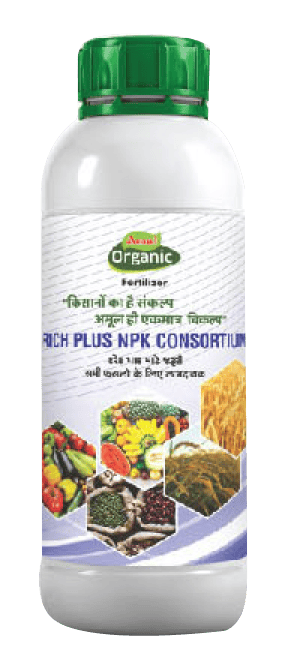Liquid Bio Fertilizers

Amul Rich Plus Azotobacter
Amul Rich Plus Azotobacter
It has amazing ability to fix free nitrogen in the air. Azotobacter is one of the best options to use as a biofertilizer for environmentally friendly and sustainable crop production because of its ability to enhance plant health through nitrogen fixation, growth hormone production, nutrient uptake, plant disease management and better soil health recovery.

Amul Rich Plus Azospirillum
It can colonize plant roots and can fix atmospheric nitrogen, is a biofertilizer, it produces phytohormones, especially indole-3-acetic acid, and it is a plant biostimulator and aided the ability to withstand abiotic stress.

Amul Rich Plus PSB
Phosphate solubilizing microbes are a class of beneficial microorganisms, which can solubilize insoluble organic and inorganic phosphorus compounds, which are easily taken up by plants.

Amul Rich Plus KMB
There are many bacteria in the soil which convert the soluble potash in the soill into root available forms by forming various acids and polysaccharides. It is great alternative to expensive potash chemical fertilizers.

Amul Rich Plus N.P. Consortium
Amul Rich Plus N.P. Consortium
N.P. Liquid biofertilizer is a mixture of three types of locally efficient microorganisms namely nitrogen-fixing Azotobacter, Azospirillum and phosphatase Bacillus species. Biochemical processes naturally convert nitrogen and phosphorus into available forms
Amul Rich Plus N.P.K. Consortium
Amul Rich Plus N.P.K. Consortium
N.P.K. Liquid biofertilizer is a mixture of five types of locally efficient microorganisms namely nitrogen-fixing Azotobacter, Azospirillum and three species of phosphate and potash-fixing Bacillus. Such efficient microbes work like factories in the soil and through biochemical processes naturally keep the nitrogen, phosphorus and potash cycles moving, keeping the soil alive and increasing fertility and crop production.
Amul Rich Plus PSB & KMB
Amul Rich Plus PSB & KMB
PSB and KMB are liquid biofertilizer which has total of two types of locally effective microorganisms have been synthesized. Biochemical processes naturally convert phosphate and potash into available forms.



